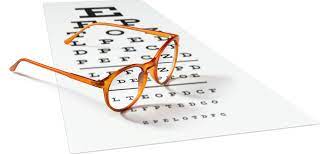When to contact the ophthalmologist
According to the World Health Organization (WHO), visual impairment is avoidable or treatable in over 80% of cases.It is therefore advisable to follow the recommended eye check schedules: in children at 3 years, 5-6 years and 11 years; in adults who are about to get their driving license and / or start work; every 2 years after reaching the age of 50 and every year after the age of 70.
Checks should be more frequent in those with the following risk factors
- Already diagnosed eye disorders;
- Family with cases of ocular disorders;
- Conditions that lead to potential eye problems such as diabetes;
- Treatments that have serious side effects affecting the eyes;
Neurological and / or eye surgery. In this case it is advisable to have yourself checked every year.Infographic illustrating the capillaries of a healthy eye and one with retinopathy
Of course, it is also necessary to go to an ophthalmologist when you have injuries and trauma or symptoms that can lead you to suspect the presence of ocular disorders. So what are the signs that should lead to a visit? In general, the manifestations that indicate eye disorders are:
Blurred vision. It is usually due to refractive defects of vision (myopia, astigmatism, etc.), so it is not urgent to see a doctor, but it can also indicate more serious disorders that must be treated as soon as possible.
He must immediately push for a checkup when there is pain in the eyes, a strong disparity in visual acuity between one eye and the other, partial vision loss and when it occurs in immunosuppressed people;
Reduced night vision
This symptom is generally caused by a refractive defect of vision that is not well corrected but can also be caused by other disorders such as problems with the retina. In any case, therefore, it is important to consult a doctor to understand the cause of the symptom;
Tearing.
- Often this is not a worrying symptom: it can result from allergies or colds.
- Watery eyes should prompt a checkup immediately if hard masses are noted in or near the tear ducts or if tearing occurs frequently for no apparent reason;
Dry eye, redness and / or burning of the eyes. They can result from allergies, inflammation, infections, or other rarer causes. It is therefore a good idea to be examined in order to deal with the cause of the problem;
 Vision of floaters (floaters), called flying flies, or light flashes (photopsias). Dark spots or lights that float in front of the eyes usually occur during ocular migraines (also called ophthalmic headaches) or arise from the contraction of the vitreous body (a substance that fills the eyeball), which tugs at the retina: for example, they appear when there we rub our eyes. Therefore, they are usually not indicative of serious pathologies.
Vision of floaters (floaters), called flying flies, or light flashes (photopsias). Dark spots or lights that float in front of the eyes usually occur during ocular migraines (also called ophthalmic headaches) or arise from the contraction of the vitreous body (a substance that fills the eyeball), which tugs at the retina: for example, they appear when there we rub our eyes. Therefore, they are usually not indicative of serious pathologies.
Rarely, however, they can indicate problems with the retina or vitreous humor, such as bleeding, inflammation and retinal detachment. It is therefore advisable to go to an ophthalmologist when floaters appear suddenly or are observed together with ocular pain and / or loss of vision (complete or partial);
Sensitivity to light or photophobia (pain when light reaches the eyes). These reactions occur normally, for example when you go from a dark to a very bright environment or when you ingest substances that cause dilation of the pupils. In these cases they are due to an excess of light perceived by the retina. In other cases it may indicate the presence of migraine with aura or ocular disorders such as inflammation and infections, so it is good to consult a doctor for information on how to cope with the symptom;

